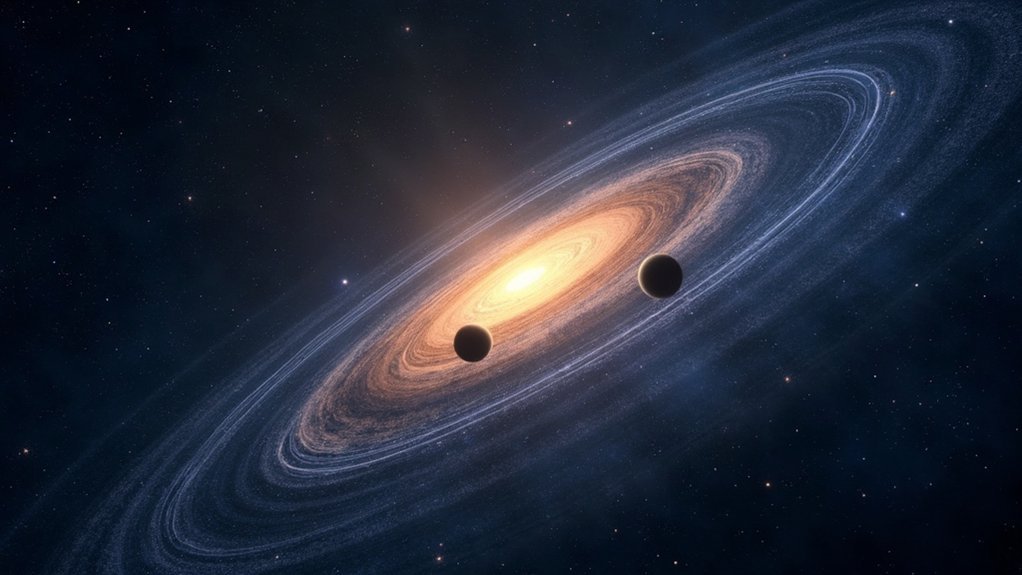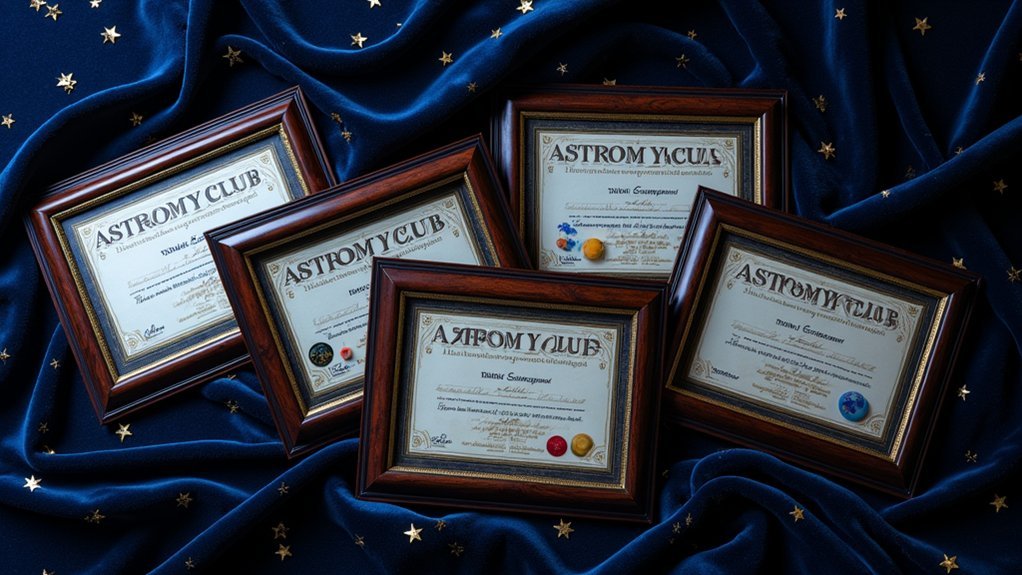To understand elliptical planetary orbits, focus on three key concepts: First, recognize that planets follow elliptical paths with the Sun at one focus point. Second, remember that orbital speed varies—planets move faster at periapsis (closest approach) and slower at apoapsis (farthest point). Third, grasp that eccentricity measures how elongated an orbit is, from perfectly circular (0) to highly elliptical (approaching 1). These fundamental principles will reveal the fascinating mechanics of our solar system’s celestial dance.
Kepler’s Laws: The Foundation of Elliptical Motion

While ancient astronomers believed planets moved in perfect circles, Johannes Kepler revolutionized our understanding of celestial mechanics with his three fundamental laws.
You’ll find that planets actually travel in elliptical orbits with the Sun positioned at one of the two focus points, not at the center as previously thought.
Kepler’s Laws explain why planets speed up when gravity pulls them closer to the Sun and slow down when they’re farther away.
Planets dance to gravity’s rhythm—accelerating in the Sun’s embrace, then drifting leisurely at orbital edges.
The eccentricity of these paths determines how elongated the orbit appears—Earth’s is nearly circular with an eccentricity of just 0.0167.
The mathematical relationship between a planet’s orbital period and its semi-major axis (T²∝a³) applies universally throughout our solar system and beyond, allowing you to predict the motion of any orbiting body.
Balancing Forces: Gravity and Inertia in Planetary Orbits
Kepler’s laws elegantly describe planetary motion, but they don’t explain the fundamental forces creating these elliptical paths. Two competing forces shape a planet’s orbit: gravity pulls it toward the star, while inertia maintains its forward momentum.
When you observe planets in our solar system, you’re witnessing a perfect balance. If a planet’s velocity is too low, gravitational pull would cause it to crash into its star; too high, and it would escape the star’s influence entirely. This delicate equilibrium results in elliptical orbits with varying eccentricity.
As planets travel along their path, they speed up at periapsis (closest approach) and slow down at apoapsis (farthest point). This velocity change occurs because gravity’s strength diminishes with distance, creating the characteristic elliptical orbit rather than a perfect circle.
Visualizing Orbital Eccentricity and How It Affects a Planet’s Journey

How can we truly understand the dance of planets through space? The eccentricity of an elliptical orbit reveals how much it deviates from a perfect circle, ranging from 0 to nearly 1. Mercury, with an eccentricity of 0.2056, has the most elongated orbit among planets in our solar system.
| Orbital Position | Distance to Sun | Speed |
|---|---|---|
| Periapsis | Closest | Fastest |
| Mid-orbit | Intermediate | Moderate |
| Apoapsis | Farthest | Slowest |
As you track a planet’s trajectory, you’ll notice its orbital speed changes according to Kepler’s Second Law—moving faster at periapsis and slower at apoapsis due to gravitational effects. The semi-major axis determines the orbit’s size and helps predict a planet’s position throughout its elliptical journey.
Frequently Asked Questions
How Do You Know Which Planet Has the Most Elliptical Orbit?
You’ll know by measuring orbital eccentricity, where values closer to 1 indicate more elongated paths. Mercury has the most elliptical orbit in our Solar System with a high eccentricity of 0.2056.
What Are the Key Features of an Elliptical Orbit?
In an elliptical orbit, you’ll notice variable distances from the central body, changing speeds (fastest at periapsis, slowest at apoapsis), and a specific eccentricity value that tells you how stretched the orbit is.
What Is the Math Behind the Elliptical Orbits?
You’ll find that elliptical orbits are governed by mathematical principles including Kepler’s laws, the eccentricity formula e = √(1-b²/a²), and the velocity equation v = √(GM(2/r-1/a)), which all describe the object’s path and motion.
What Are the Three Special Points Associated With Elliptical Orbits?
You’ll find three key points in elliptical orbits: the periapsis (closest point to the central body), the apoapsis (farthest point), and the center of the ellipse where the two foci are located.
In Summary
You’ve now uncovered the key to understanding elliptical orbits: Kepler’s mathematical foundations, the delicate balance of gravitational and inertial forces, and the concept of eccentricity. When you’re looking at planetary paths, you’ll recognize how these principles govern our solar system. With these tools, you’re equipped to grasp why planets don’t simply fall into the Sun or fly away—they’re locked in an elegant cosmic dance.





Leave a Reply